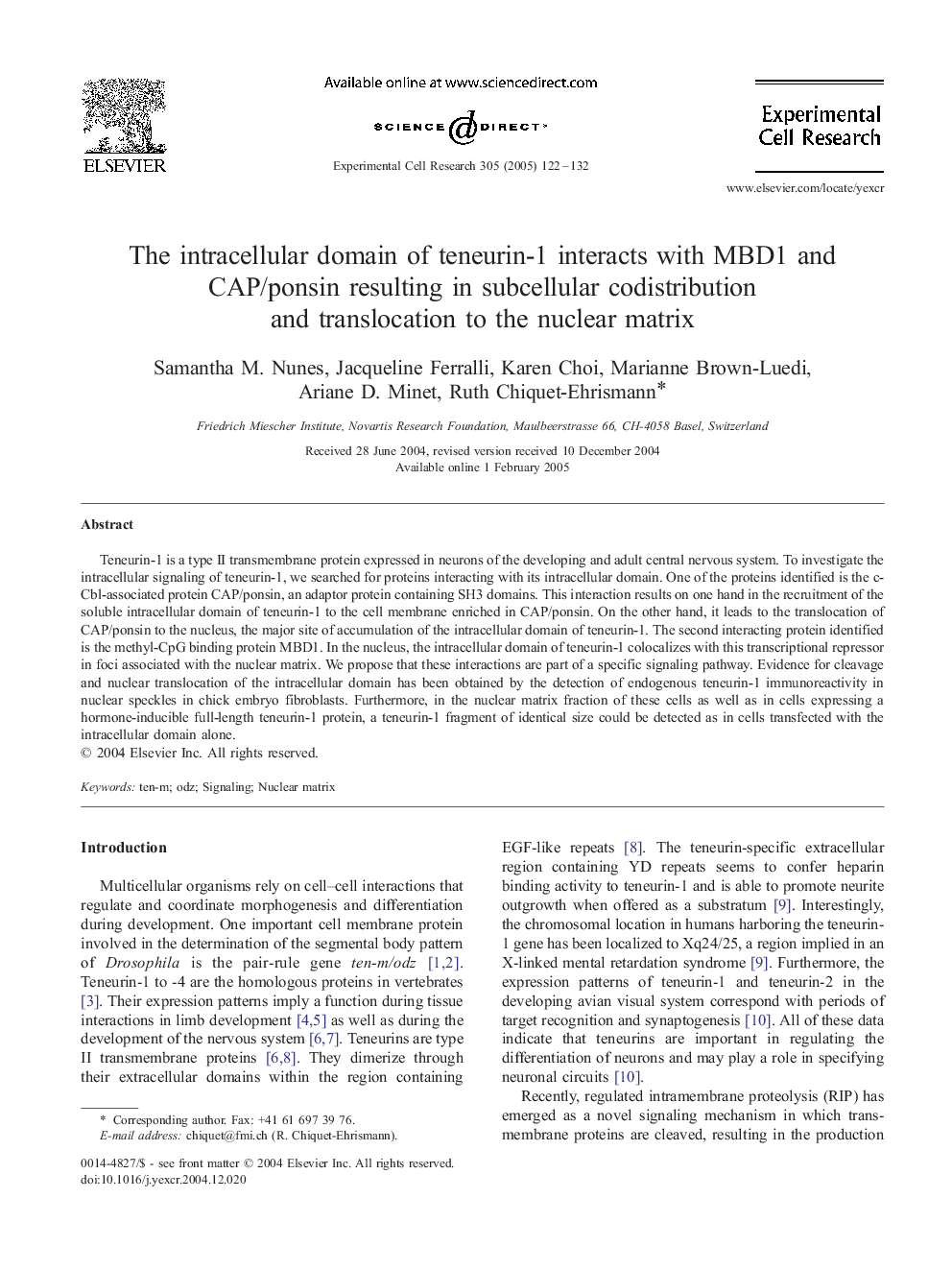| Article ID | Journal | Published Year | Pages | File Type |
|---|---|---|---|---|
| 10905481 | Experimental Cell Research | 2005 | 11 Pages |
Abstract
Teneurin-1 is a type II transmembrane protein expressed in neurons of the developing and adult central nervous system. To investigate the intracellular signaling of teneurin-1, we searched for proteins interacting with its intracellular domain. One of the proteins identified is the c-Cbl-associated protein CAP/ponsin, an adaptor protein containing SH3 domains. This interaction results on one hand in the recruitment of the soluble intracellular domain of teneurin-1 to the cell membrane enriched in CAP/ponsin. On the other hand, it leads to the translocation of CAP/ponsin to the nucleus, the major site of accumulation of the intracellular domain of teneurin-1. The second interacting protein identified is the methyl-CpG binding protein MBD1. In the nucleus, the intracellular domain of teneurin-1 colocalizes with this transcriptional repressor in foci associated with the nuclear matrix. We propose that these interactions are part of a specific signaling pathway. Evidence for cleavage and nuclear translocation of the intracellular domain has been obtained by the detection of endogenous teneurin-1 immunoreactivity in nuclear speckles in chick embryo fibroblasts. Furthermore, in the nuclear matrix fraction of these cells as well as in cells expressing a hormone-inducible full-length teneurin-1 protein, a teneurin-1 fragment of identical size could be detected as in cells transfected with the intracellular domain alone.
Keywords
Related Topics
Life Sciences
Biochemistry, Genetics and Molecular Biology
Cancer Research
Authors
Samantha M. Nunes, Jacqueline Ferralli, Karen Choi, Marianne Brown-Luedi, Ariane D. Minet, Ruth Chiquet-Ehrismann,
